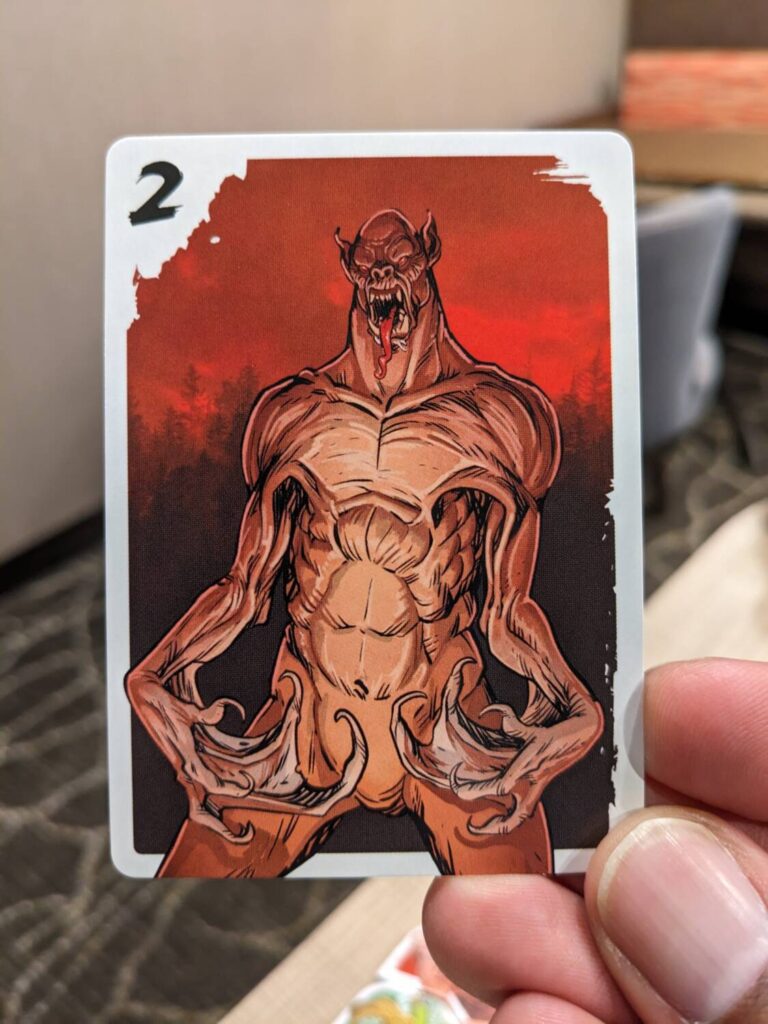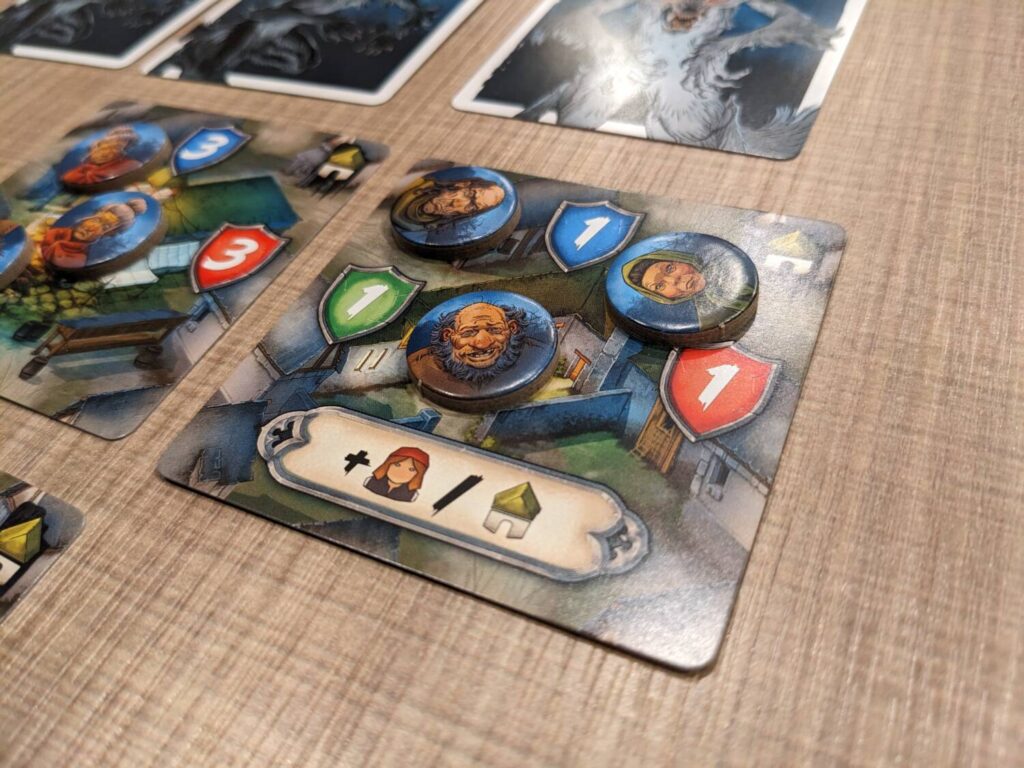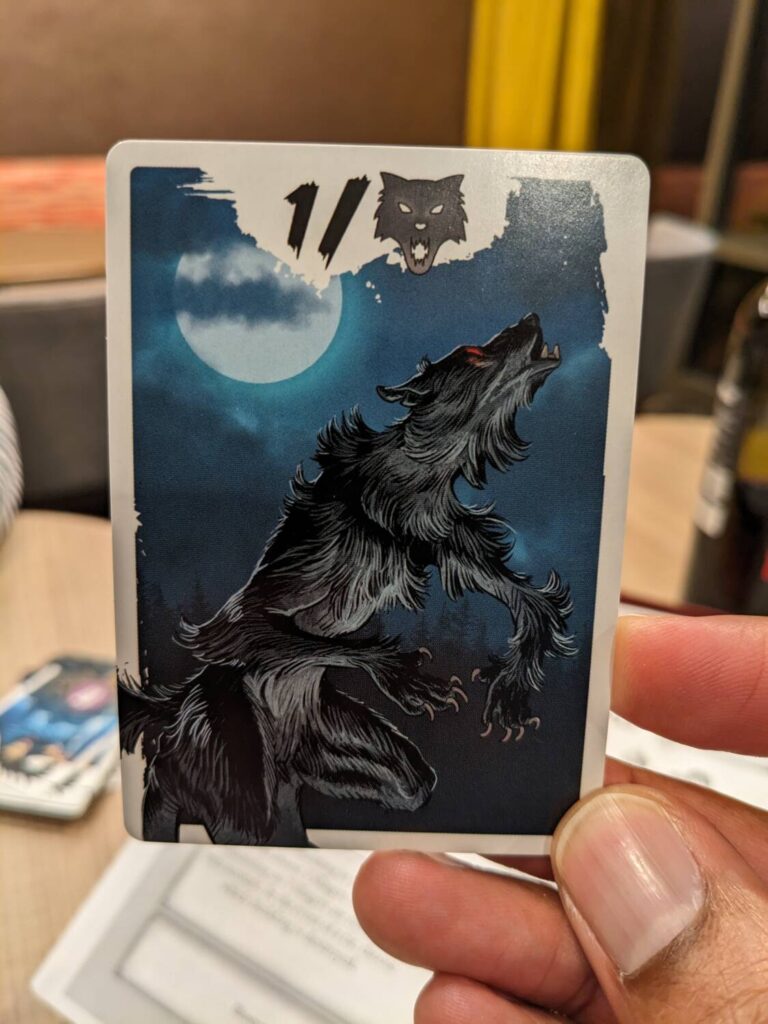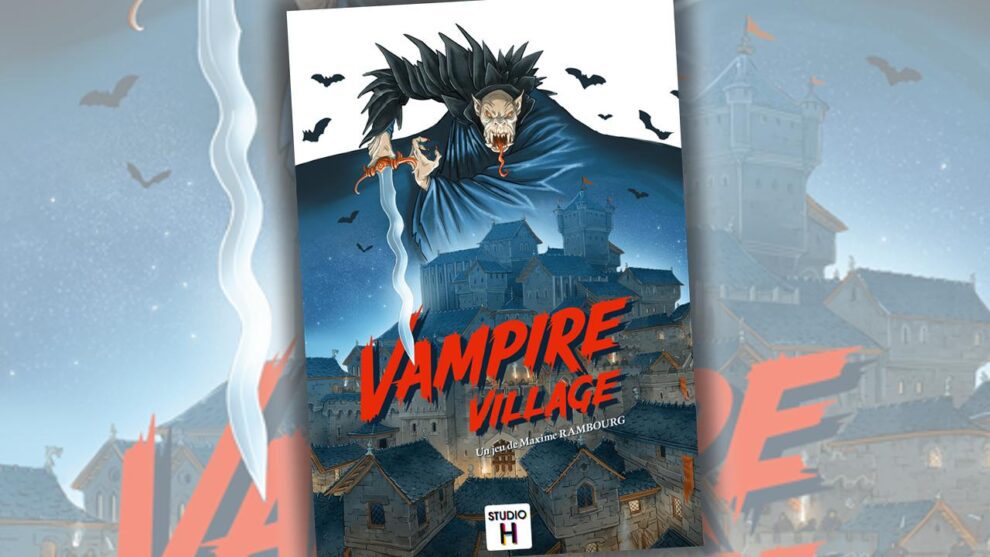As time goes on, I think of myself more and more as a professional tabletop critic. This is a change from when I first joined the Meeple Mountain team about three years ago, in part because of some of the things I recognize during the first readthrough of a game’s rules.
Vampire Village (2024, Studio H) was on my radar after getting a walkthrough from the publisher at last year’s SPIEL event in Essen, Germany. The artwork is gorgeous. Studio H has generally done me right: the Suspects games, Vivarium, and Oriflamme are all fun and stand out for sharp production elements and accessible play experiences.
But during my first readthrough of the rules for Vampire Village, I raised an eyebrow—the game, built around the tenets of tower defense experiences, has only two rounds. Not five rounds, or 10 rounds, or 18 turns…two rounds, broken into three phases each.
This feels a little too short for a tower defense game, I thought. But I hadn’t played it yet, so I got my wife to join me at the table to try a two player game of Vampire Village.
After wrapping up, I was encouraged that the game was quick, lasting only about 20 minutes. It was short enough that I figured we could play it again. Besides, we were at a hotel, on vacation for spring break, playing games in the hotel lobby because we couldn’t leave the building. What else were we doing that night?
“Another try?” I offered.
“Nope,” she responded quickly. “It just wasn’t very interesting.”
Uh-oh.

Plants vs Vampires, Witches and Wolves (Zombies Not Available)
Vampire Village is a tower defense game, a strategy genre where players have to build up a fortress and then defend it against progressively more powerful enemies trying to get inside. Usually, this applies to video games I’ve played over the years like Plants vs. Zombies and Defense Grid 2; the internet will tell you that 1990’s Rampart was the first widely-available tower defense video game.
In Vampire Village, players build up a small town using building and hero cards, adding villagers that sit helplessly on these cards as you try to protect them. The hero cards provide slightly different abilities—usually, the ability to move villagers inwards towards a safer spot in your village, or occasionally a power that allows the owner to defend themselves differently when monsters show up.
In each of the game’s two rounds, three phases happen in the same order. First, players build those buildings and/or add heroes. With a hand of six cards, players simultaneously select one of the six, then pass the remainder to the left (or the right, in round two). Drafting continues in this fashion until the cards are gone. After each card is selected, they must be placed orthogonally adjacent to any previously placed card, with the village grid limited to no more than four buildings/heroes in a row or column.
Then, we get to the creature phase. Six cards are handed out—well, actually, three cards are handed out, then three more—and players get to choose one card that represents a creature that will attack the active player’s village during the attack phase. Of the remaining two cards, hand one creature to the player on your left, then the one on your right. Rinse and repeat with three more cards, which leaves each player with six cards that will attack their individual village.
Attacks come in waves, from three different monster types. Witches attack villages from the left. Wolves show up and attack from the top. Vampires attack from the right. Each has different strength rules, but here’s the funny part: no matter how well you prepare each side of your village for the attack, you are definitely getting 66% of your creature cards from a neighbor without knowing exactly what is coming.
That led to comedy in each of my games. In a two-player game with my 10-year-old, I got attacked once by five different witch cards, who had a total attack power of 14. The defense of my left-most, witch-defense wall? Three. So, that left-most column was toast, and the way each horde of creature power stacks, I lost four buildings in that round without any real way to plan for my town getting demolished.
Sure, this was a good laugh…but does this make for a fun experience?
“Hey, Stu, build up your castle! In a moment, I’m going to deal some cards that are going to topple your great work—surprise!”
Vampire Village mitigates some of this with a super-quick playtime. I did three plays of Vampire Village—two plays with two players, and one play with five players—and none of the games took longer than 35 minutes. It’s also easy to teach, has very clean iconography, and end-game scoring is a cinch: any villagers still alive are worth a point each, with one bonus point for every monster that couldn’t get into your village by the end of the second round. Scores ranged from single digits to the low 20s, so anyone can math out the ending.

The Artwork is the Wow
Vampire Village, as a game, is pretty average. There’s really no “wow” with the gameplay. I felt more lucky than clever when surviving a monster attack, mainly because even if players want to take down your village, they have to play the cards they were dealt. In many cases, trying to target someone felt difficult.
And even if you prepared for almost any contingency, Vampire Village has a fourth monster type up its sleeve: Demons. Demons attack towns from the bottom—where there are no defenses—and get to randomly take out heroes, villagers, or complete buildings. There aren’t many Demons in the deck, but they can situationally break the game in the wrong hands.
In tower defense video games, you usually get a heads-up on what type of monster is attacking each round, and the best weapons or ways to defend yourself. In Vampire Village, things feel too random. In my five-player game, I began the second round with zero defenses on the right-hand side of my village. Over the course of six building cards, I didn’t see a single one with a shield to defend myself on that side of town. Not surprisingly, opponents targeted that area and I finished that game with seven points (i.e., terrible).

So, where’s the “wow” with Vampire Village? The images designed by artists Jérôme Lereculey and Guillaume Tavernier are fantastic. The monsters have real flavor, even if the small villager tokens feel less inspired. Although this is a game supposedly featuring vampires attacking a village, the other monsters look just as good, maybe better. The demons and witches really stand out, as well as some of the vampire variants. (My main point of confusion: why is there a vampire with a sword on the cover? Although I’m no vampire scholar, don’t vampires usually show up looking to suck the blood out of my dead corpse? What’s the sword for? To kill me twice?)
One additional element of “wow”—the piles of laughter that arrive thanks to the chaotic nature of play. The game against my 10-year-old was a hoot, even if I thought the gameplay was silly. Three of the five players in our five-player game had villages that were almost completely destroyed by the end of the game. One guy’s town got attacked by vampires with a strength of 14, while another got hammered by witches in a similar format.
Bourbon helps everything, and that helped while we watched dozens of helpless villagers get murdered by monsters.
Vampire Village is fine. I laughed, nearly cried, then moved on. My faith in Studio H is not shaken, but I’m surprised this one fell flat for me and my fellow gamers.











Add Comment